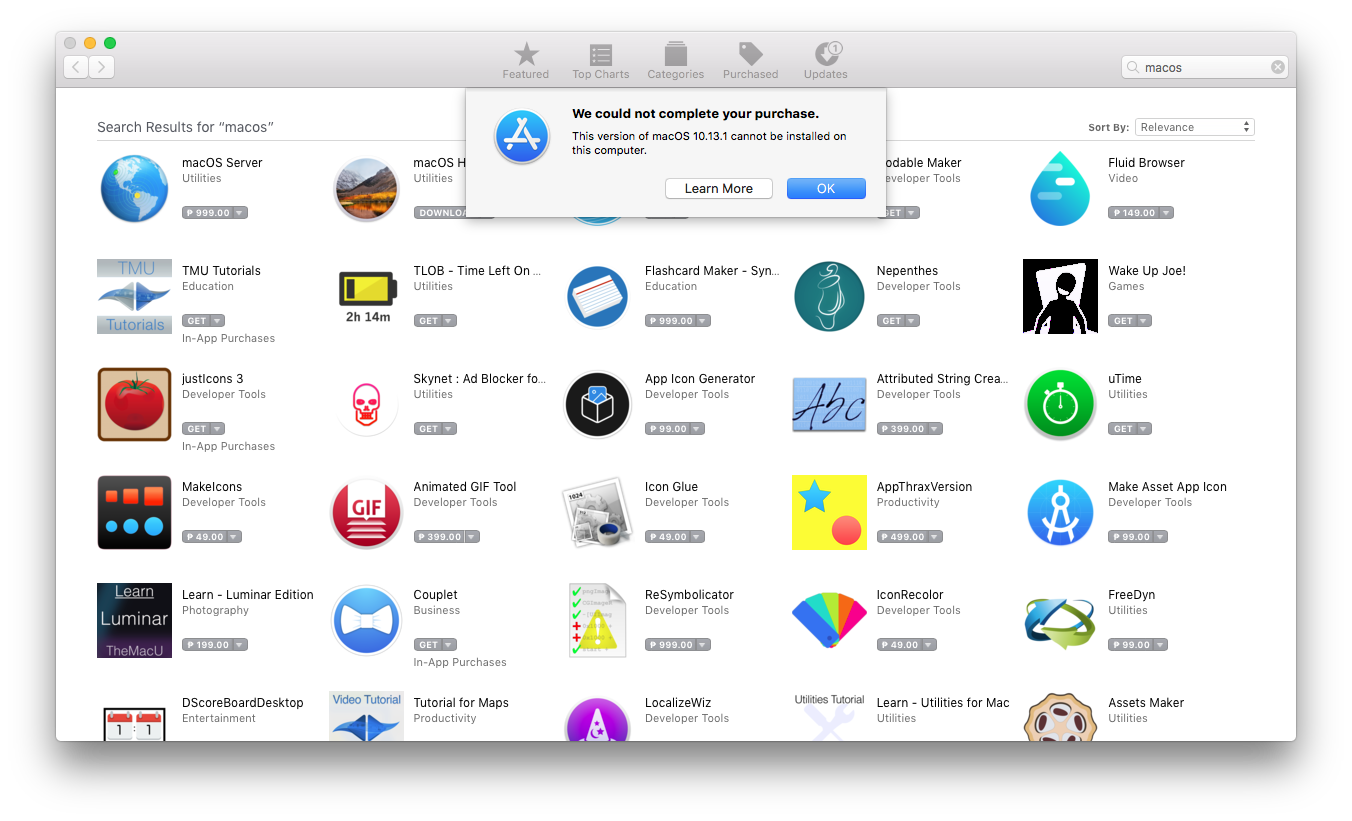Installing unsupported version on Mac. I use a mid 2015 15 inch mbp for basic video editing and software development. I see the oldest Mac that can run Mac OS is this version so I worry the next. Part 3: How to Install macOS Big Sur on an Unsupported Mac. Before the installation, make sure that you take a backup of your Mac on an external hard disk as you will lose all your data when you install the new operating system. There are several backup software like Time Machine, iCloud, Dropbox, and many more. The easy way to run macOS Catalina on your Unsupported Mac. Download Latest Version View Changelog. Current Version Info. Current Version: 1.4.4. You can download and install this package (if running OS X 10.10 Yosemite or later) to install the latest BootROM version (you MUST reboot after installing the package to apply the firmware update. Option 2: Install an Unsupported macOS Release Anyway Apple doesn’t share why it decides to exclude a Mac from a major release, but performance likely plays a big part in the decision. If a new version of macOS might make performance significantly worse, Apple could decide to drop support for that model. Step 1 How to install macOS Mojave on Unsupported Macs. Grab a copy of the Mojave Patch Tool at the link below: Make sure that your Mac is.
UpdatesImportant Notes:
- Using APFS is REQUIRED in Mojave in order to receive system updates via the normal Software Update method. If you choose to continue using macOS Extended (Journaled) as your filesystem type, you will NOT receive System Updates via System Preferences. If you are not using APFS, you can follow the 10.14.1 installation steps below.
- After applying ANY system update via Software Update, re-applying post-install patches using your Mojave Patcher installer volume will most likely be necessary. If you install a software update and the system fails to boot afterwards, this is what needs to be done.
Install Unsupported Mac Os Download
10.14.610.14.6 can be updated normally via Software Update if using an APFS volume, and will need to be patched using an installer volume created with Mojave Patcher version 1.3.2 or later after installing.
Install Unsupported Mac Os X 2009

10.14.5 can be updated normally via Software Update if using an APFS volume, and will need to be patched using an installer volume created with Mojave Patcher version 1.3.1 or later after installing.
10.14.4
10.14.4 adds new changes that ARE NOT patchable by the post-install tool of Mojave Patcher v1.2.3 and older! Before updating to 10.14.4, you you will need to use the latest Mojave Patcher version to create a new installer volume, using the 10.14.4 installer app. Then, update to 10.14.4, either by installing via Software Update, or by just using the installer volume you've created to install.

10.14.3

If you are currently running 10.14.1 or 10.14.2, you can simply use the Software Update pane of System Preferences (if using APFS) to apply the 10.14.3 update. Once the update is installed, you will most likely need to re-apply post-install patches to get the system to boot again. This process is detailed in steps 8 - 10 above. If you are currently running 10.14.0, you'll need to proceed with the 10.14.1 update method described below.
Install Os Sierra On Unsupported Mac
10.14.2If you are currently running 10.14.1, you can simply use the Software Update pane of System Preferences (if using APFS) to apply the 10.14.2 update. Once the update is installed, you will most likely need to re-apply post-install patches to get the system to boot again. This process is detailed in steps 8 - 10 above. If you are currently running 10.14.0, or are using a non-AFPS volume, you'll need to proceed with the 10.14.1 update method described below.
Mac Os X Install Disk
10.14.1/macOS Extended (Journaled) volumes

The Mojave 10.14.1 update does NOT install properly on unsupported machines, and could result in an unbootable OS. Licence key drivereasy v5.6.9. If you want to install the 10.14.1 update (and are not currently running 10.14.1), perform the following steps:
• Download the latest version of Mojave Patcher
• Download the installer using the Tools menu of Mojave Patcher
• Create a patched USB installer
• Boot from that, and install 10.14.1 onto the volume containing an older release.
• Once done, apply the post-install patches, and you should now be on 10.14.1.